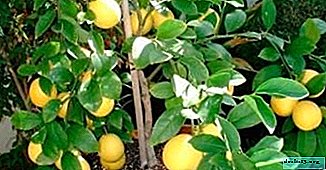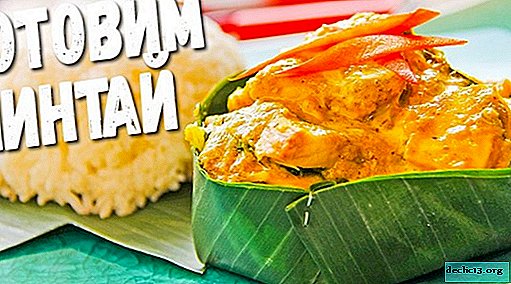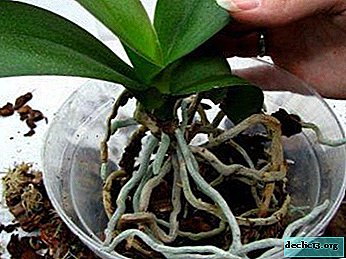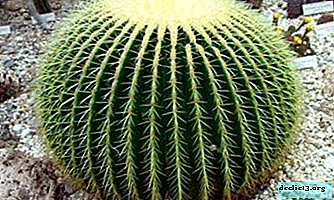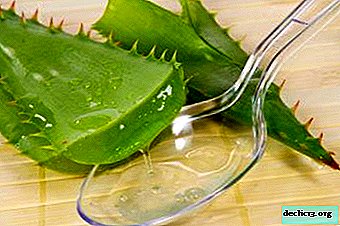What is agave, how does it look and what should be guided in order not to be confused with cactus or aloe?
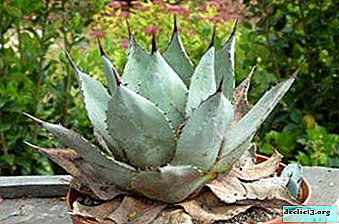
Agave is often confused with aloe and cactus. But despite the presence of spines in each of them and the inherent drought tolerance of all, these are different plants.
Previously belonged to the Asparagus family in the Agave family, which is now separated into a separate family (according to the Great Soviet Encyclopedia).
In the article, we will consider in detail the types of agave, and also find out whether agave differs from aloe and how.
What is it like?
Agave is a genus of the Agave kingdom family of the plant, belonging to the class Monocotyledonous. The family includes about 450 species and is divided into three categories (tribes):
- agave;
- yucca;
- host
The plant is perennial and succulent.
Reference. Succulents are plants that can store water in parenchymal tissues and survive in arid places.It comes from warm countries - Mexico, America. The most common agave is American. You can find out about the features of various types and varieties of agave here, and in this article we talked in detail about blue agave from Mexico.
It was brought to Europe after the discovery of America and is grown as a decorative, exotic plant in the Mediterranean and in the south of Russia - in the Crimea and on the Black Sea coast of the Caucasus.
Succulent refers to monocarpic plants that bloom once and then die, leaving root offspring in large numbers. Flowering occurs at the age of 6-15 years. Peduncle can reach 12 m in height with inflorescences in the form of an ear or panicle. Read more about agave blooming and under what conditions it is possible to read here, and from this material you can learn about all the nuances of successful agave cultivation at home.
Appearance
- Stem. The stem is either not at all, or it is short.
- Power socket. The leaves are collected close to the root in the form of a dense rosette, the diameter of which (depending on the type of agave) can be from four centimeters to four and a half meters.
Most species have a rosette with a diameter of about three meters, which form 20-50 leaves. But there is also such a species as Parnotsvetkovaya, in which a rosette is formed from 200 narrow and thin leaves.
- Leaves. Their description:
- large and fleshy;
- can be both narrow and wide;
- at the edges have straight or curved spikes;
- the ends of the leaves end with a thorn;
- thanks to the parenchymal tissue they are able to accumulate water;
- wax coating prevents the evaporation of water;
- stripes of white or yellow color are possible along the length of the sheet;
- color is different: green, gray or bluish green.
Photo
And this is how a plant looks in the photo, which is usually confused with a cactus.





Is it a cactus or not?
These succulents in a taxonomic tree are far apart, because belong to different classes. Agave is a monocotyledonous, and a cactus is a dicotyledonous plant.
Differences from Aloe
Aloe also belongs to monocotyledonous plants, nevertheless agave is not this plant.
Differences:
- these are representatives of different families: aloe from the Asphodel family, and not from the Agave family;
- different effects of flowering on life expectancy: one dies after flowering, and the other does not.
How not to confuse a plant with other species when buying?
External differences between agave and aloe:
- agave has no stem, leaves form a rosette, and aloe has a stem;
- leaves in the outlet are sharp, long and flat;
- aloe leaves are not so leathery and the wax coating is less dense;
- agave at the ends of the leaves always has a spine, aloe only at the edges (sometimes not at all).
How to distinguish a cactus:
- most cacti have no leaves;
- the most distinctive feature of cacti is thorns, they grow from areoles.
Each of the described plants has its own distinctive features, allowing not to confuse them with each other. But you should know that aloe and agave are similar in chemical composition, so the healing effect of their use is also similar (about the healing properties of agave and the features of its use in traditional medicine, read here). A cactus is usually not difficult to recognize.

